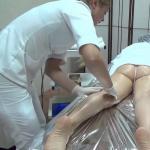Cosmodrome on Cape Canaveral Square background. Cape Canaveral
The main attractions of Orlando are Disneyauord and NASA cosmodrome at Cape Canaveral. It should be noted that Orlando received a powerful impetus for development thanks to Disney's company, which built a number of entertainment centers here in various parts of the city and beyond. Naturally, hotels and shops and transport infrastructure needed for receiving visitors appeared. There are many mixed forests and reservoirs around the city. The city is exclusively well maintained and resembles a single park complex, where lakes and canals, forests and glades, fountains and hotels, roads and squares, entertainment centers and shops complement each other.
Because of the long crossing from Miami to Orlando, we had only 1 free day, and we decided to devote it to the American cosmodrome at Cape Canaveral. Disneyland in all over the world - a lot. And the American cosmodrome or, as he is called the Kennedy Space Center - one.
Because Orlando is focused on arriving guests, the hotel's lobby has a tour desk, where we ordered the tour of the tour. It turned out that if you go to a cosmodrome on my transport, then its cost is $ 38, and if you drive by bus, then plus another $ 57 per person. At the same time, in the excursion bureau, the Orlando and Disneyuord schemes also acquired.
In 8-15, the next morning they got to the square, where the excursion bus arrived at 8-30 and brought us together with others wishing to the NASA cosmodrome at Cape Canaveral. An hour later, we arrived at the place and the first object of the visit was the Museum of Cosmonautics.
In the museum among many exhibits - photos, spacecraft, simulators, spacecraft, layouts of rockets and starting complexes - there is a copy of our first artificial satellite of the Earth.
The museum surprised, with what humor Americans recognize their defeat in the development of space. Here on the stand presented a large photograph of the American astronauts of the early 60s, and under it the main question: "Which of them will be the first?" And on the neighboring stand, the portrait of Gagarin and the inscription "The first person, having flown over the Earth for 107 minutes April 12, 1961, Russian Yuri Gagarin - Major of the Soviet Army.
The museum also has a centrifuge, where anyone may feel overload, which tests the pilot when managing the military aircraft. The booths are not only rotating, but also move in the vertical plane, simulating the maneuvers of the aircraft. Usually people come out of the cabin swaying. I also had a moment when rotating, when the monitor screen "swam" before my eyes.
Next to the museum in the open area are American rockets in full size. Among them are the layout of our carrier, which brought into orbit the first satellite of the Earth. A special impression is performed by the lying giant Saturn-5 rocket from the Lunar Odysseas of the Americans.
A separate platform is dedicated to cosmic vehicles of reusable. Here it is a shuttle, in which you can enter the overpass, and next to the pedestal - the "Columbia" launch vehicle is an accelerated block of shuttle. In the neighboring case there is a visual hall where visitors can watch a film about creating ships and also a hall with active seats, where you can see all the phases of the start and exit of the shuttle in orbit and feel the vibration and overload that are experiencing astronauts during take-off.
Then excursions can sit in special NASA buses and visit other objects of the cosmodrome. From the bus window can be seen from a distance of 100 meters assembly, starting platform and tractor on the tracked go for the spacecraft "Colombia".
Buses make several stops from pavilions prepared for the public. One of them is dedicated to the lunar program of Americans. In a huge hall, Saturn's launch vehicle was installed, dismembered on the steps, as well as the pilotable ship "Apollo" and the lunar module, which ensures the descent of astronauts to the surface of the moon and return to the manned ship. The hall shows a film about the preparation and start of the Saturn Apolon ship. Very spectacular shooting, showing the jet of a mixture of gaseous hydrogen and oxygen, leaving the nozzle of the rocket, the sparks flying on it, then the flame appears - the engine is running, then the sea of \u200b\u200bfire is turned on the rocket, the rocket is broken from the ground and goes down in the clubs and smoke.
Then a announcer appears, who with a smile says that we looked at the history of the preparation of the expedition and start to the Moon of the Apolon spacecraft, and the story about how astronauts visited the moon - this is another story. And on this film ends. Thus, NASA does not confirm and does not refute the legend and the disputes still lasting about whether the Americans on the moon were 30 years ago or the public a film shot, shot in Hollywood.
Next to these pavilions are the stands for honorary guests watching spacecraft starts that are usually shown on TV. Starting complexes from here hardly guessed away - a few kilometers behind the lake.
The bus also stops in a small town south of start-up complexes, where there is a modern center, flight management, production workshops for assembling components of spacecraft. Here, the excursors show the gym, imitating the fragments of the space station the world currently in orbit.
Unfortunately, all the space objects provided for by the program did not succeed due to the heavy rain - the phenomena is quite typical for this region in the afternoon. In 17-30, the excursion ended, and our bus took us to Orlando.
A cosmodrome at Cape Canaveral in the United States is the John Kennedy Space Center and the Air Force Base, which is a division of the Space Command of the United States Air Force.
The Kennedy Space Center is located on the island of Merrita, located in close proximity to the Cape Canaveral itself. NASA began to buy land here in the early 1960s, after an active work on the lunar program began in the USA. Today, the size of the center of Kennedy is 55 km long and about 10 km wide, and the total area is 567 km².
There are several starting sites on the territory of the center, from here, from the starting complex number 39, the shuttles are launched. A small part of the center is assigned to visitors: there is a special complex in which museums, as well as two IMAX cinema, where you can see the main points of the Apollo program. Special center bus tours are designed to introduce guests with closed places of the complex. In addition, there is a monument "Space Mirror" - a memorial dedicated to the dead astronauts.
The Air Force Base, which is directly on Cape Canaveral, does not participate in the launch of space shuttles. However, and from here, cosmic studies began to be important for the United States. So, in 1958, the first Earth Satellite "Explorer-1" satellite was launched from the territory of the Air Force of the Air Force, from here in 1967, the first crew of the "Apollo-7" flew into space, and in the period from 1962 to 1977 were launched Automatic interplanetary stations for the study of the planets of the solar system. Today, there are starting complexes on the territory of the base to launch the most powerful American unmanned missiles, both existing and not active.
























The window below shows direct space broadcast
during launches and other relevant shows. Start dates -. Under this link - space online from the ISS. It -- Second Camermic camera. Port Canaveral - on this link
Time GMT (Greenwich):
Time at m. Canaveral:
Time in Moscow:
Kos-Mo-Drome (USA).The approach of military and civilian-luxury compexes is located in the Pribe-cutting area of \u200b\u200bthe Atlantic Ocean in the approximate zone of the Atlantic Ocean.
The cosmodrome hashigh efficiency due to its proximity to the equator. The speed of rotation of the Earth in such places gives a significantly greater acceleration of rocket carriers.
 There are negative location factors on Kanaverare. Here, frequent, strong hurricanes. Twice they partially destroyed starting space facilities. Another disaster is a large number of thunderstorms. To protect the rocket carriers from lightning damage, special combined complexes have been created, the cost of which is equal to several tens of millions of dollars.
There are negative location factors on Kanaverare. Here, frequent, strong hurricanes. Twice they partially destroyed starting space facilities. Another disaster is a large number of thunderstorms. To protect the rocket carriers from lightning damage, special combined complexes have been created, the cost of which is equal to several tens of millions of dollars.
From Cape Canaveral, many outstanding launches were made, but the most unique breakthrough was the pilot flight to the moon and the landing on its surface of the first astronauts according to the program.
On that day, 1969, the space race between the USSR and the United States reached the highest degree of voltage. Launched from Baikonur Automatic station Luna-15 flew along one trajectory with Apollo-11. The Soviet spacecraft was supposed to drill the soil using a robot manipulator, take a sample and deliver it to the ground.
On the day, when American astronauts stepped onto the moon, Luna-15 was sitting onto her surface. Everything was worked out, but ... experts suggested that the station faced the mountain and collapsed.
Lunar soil was the first to deliver the Americans. Another Soviet station did it later.
 Another grand program associated with the Canaverwell, began launches of shuttles: huge reusable cosmolets. At these amazing shutouts, 355 astronauts visited space.
Another grand program associated with the Canaverwell, began launches of shuttles: huge reusable cosmolets. At these amazing shutouts, 355 astronauts visited space.
There are several cosmodromes in the USA, but this is the main thing in its importance. Almost all generations of rockets of various spacecraft took off from Canaveral: Jupiter, Thor, Atlas, Titan, Delta, Falcon. Also, there were numerous test launches for military purposes of ballistic and winged missiles.
Complex for visitors to the space center. John F. Kennedy occupies an extensive area on Merritt Island that Cape Canaveral. The entrance ticket, which can be purchased for $ 50 per person over 11 years old, includes a bus tour to the cosmodrome itself, to the starting grounds.
In the first part, I talked about the pavilions located directly in the complex for visitors, including the Atlantis Pavilion. To understand how the technical capabilities of mankind advanced, it is enough to look at how the crew capsule first looked at the "Space Odyssey" 

And on what is meant by the premises for astronauts now: it is the compartment for feeding 
And individual "capsule" for sleep and rest 
Quite a decent toilet (in our country in many villages and there is no such) 
And even a treadmill! 
After completing the inspection of the complex for visitors, we go on the bus tour. She passes on such buses 
In the way, the driver tells interesting facts about the history of NASA, aeronautics, Baikonur cosmodrome, UPS ... at Cape Canaveral, includes video "on the topic".
In this building, the preservation works and the assembly of missiles are made. 
By the way, the American assembly differs from the Russian technology. We have a rocket in a horizontal position, and then on the starting area, raise the vertical. Americans immediately collect her vertically and before the starting platform, her end delivery delivers such a "baby" 
"Call" of his Crawler Transporter Marion. It was created in two copies and is the biggest caterpillar tractor in the world. In more detail about him, I wrote in the magazine technoMagazine, here's a link, but then it was a "permanent acquaintance." Now I was able to see him 
Tractor delivered its valuable cargo directly to the starting site, from where, in fact, rockets are launched. From here, Space-Shatla started. 
Driving past some "puddles", the driver draws attention to the fact that it is found in it ... crocodiles. That's right, right with great. Not bad "housing" overlooking the starting sites for launching rockets. 
The next bus stop was the Pavilion of the Mission Apollo. Here the bus landing passengers and, picking up those who have already examined the exposure, go back to the visitors complex. Meanwhile, we go to watch the next film. The plot of which, in short, is reduced to the fact that the "tips" were first launched by the satellite, the first to send a person to space, and we will go to the moon, because we are not looking for light ways .... After the film we go to the "Spectator" of the center Flight management. 
Unfortunately, the passionate view was completely forgotten about the camera, but at the time of the start of Apollon still remembered it and recorded a little video
After the "successful launch", the rocket visitors enter the hangar, where "parked" the project of the Apollo project "parked". 
As well as minivan, transporting astronauts to the starting area. 
The rear door of the minibus is open, but not to get inside, because Installed transparent partition. 
It is worth noting that the NASA program Apollo is not the name of the rocket as such. This concept includes a carrier rocket Saturn 5, which launches the spacecraft Apollo, 


The ship itself Apollo, as well as the American orbital station Skylab (Heavenly Laboratory), which existed a little more than 6 years 
Still in the hangar there is a special room with "lunar artifacts": Mission Command Module Apollo 14 
Spacks, their elements, as well as samples of the lunar breed, brought with an expedition Apollo 15 
Well, finally, we decided to go to a session of the cinema formulation of landing American astronauts on the surface of the moon. 
Entrance ticket to the complex for visitors to the cosmodrome. John F. Kennedy gives the right to visit the Hall of Fame of Astronauts, which is located on the entrances to the cosmodrome. 
But we no longer have time, spending completely all day only on the cosmodrome.
The Baikonur cosmodrome is the first and largest, most popular cosmodrome, is located in Kazakhstan, in the Kyzylorda region. In 1994, the cosmodrome with the city of Leninsk (now Baikonur) was transferred to Kazakhstan for rent from Russia until 2050. The cosmodrome covers an area of \u200b\u200b6717 km². From here, the first intercontinental ballistic missile was started, the world's first satellite, the first cosmonaut of the land of Yu. A. Gagarin, the first automatic interplanetary stations to the planets Mars and Venus.
The cosmodrome was called at different times in different ways: Research Test Polygon No. 5 of the Ministry of Defense, Kazalinsky Polygon, Tyura Polygon, Southern Polygon, State Testing Cosmodrome No. 5, but became the most famous as the Baikonur cosmodrome.
Initially, it was created as a landfill for testing an intercontinental ballistic missile R-7. To the location of the landfill presented very high demands. For example, near there should not have been large settlements, and the alienation of land plots for the structures of the landfill should not have applied significant damage to the national economy. Several possible places for placement of the landfill, including in the Far East, the North Caucasus, were examined. As a result, on February 12, 1955, a government decree was published on creating a new landfill in the area of \u200b\u200bthe Turkish of Tyura-there in the Kzyl-Ordane region of Kazakhstan. The presence of the Moscow-Tashkent railway line, the disassembled narrow scene from the Tyura Tama to the place of the future start and the presence of the river was the big advantages of this place.

In the spring of 1955, military-building brigades and detachments of more than 3 thousand people were concentrated in the bare desert. At first, the builders lived in tents, then the first dugouts appeared on the shore of Syrdarya, and on May 5, 1955, the first capital (wooden) building of the residential town was laid. Despite the hardest conditions, in the first months the automotive and railways were laid and the construction of the main object was launched - the future of the first starting complex.
On May 5, 1957, the Special Commission adopted the first starting complex of the landfill, and on May 6, the first R-7 missile was already installed on this complex. From May 15, the testing of the Intercontinental Ballistic Rocket R-7 began at the landfill.
The birth of Baikonur as a cosmodrome took place and was recognized by the whole world on October 4, 1957, when the first artificial satellite of the PS-1 land was introduced into orbit.

On April 12, 1961, the Baikonur cosmodrome was launched by the East-1 spacecraft (8K72K rocket) with the first man on board - the cosmonaut Yu. A. Gagarin.
On Baikonur for all the years of existence, 45 main types of missiles and their modifications were launched and tested, 142 main types of spacecraft and their modifications (of which 34 types of automatic interplanetary stations and their modifications).
The launch of any satellite with Baikonur costs cheaper than from other cosmodroms isched, thanks to its greater intimator to the equator. From here it is more profitable to launch satellites to stationary orbit and safely carry out the launches of manned spacecraft.

Currently, several dozen technical and starting complexes are created on the cosmodrome, intended for the assembly and preparation of launches of launch vehicles type "Union", "Proton", "Cyclone", "Zenit", "Energy" with various space objects.






